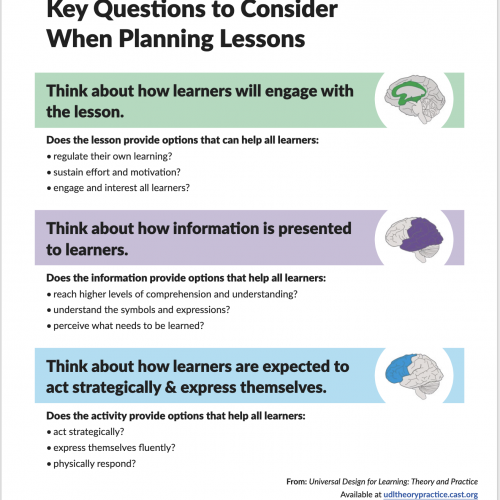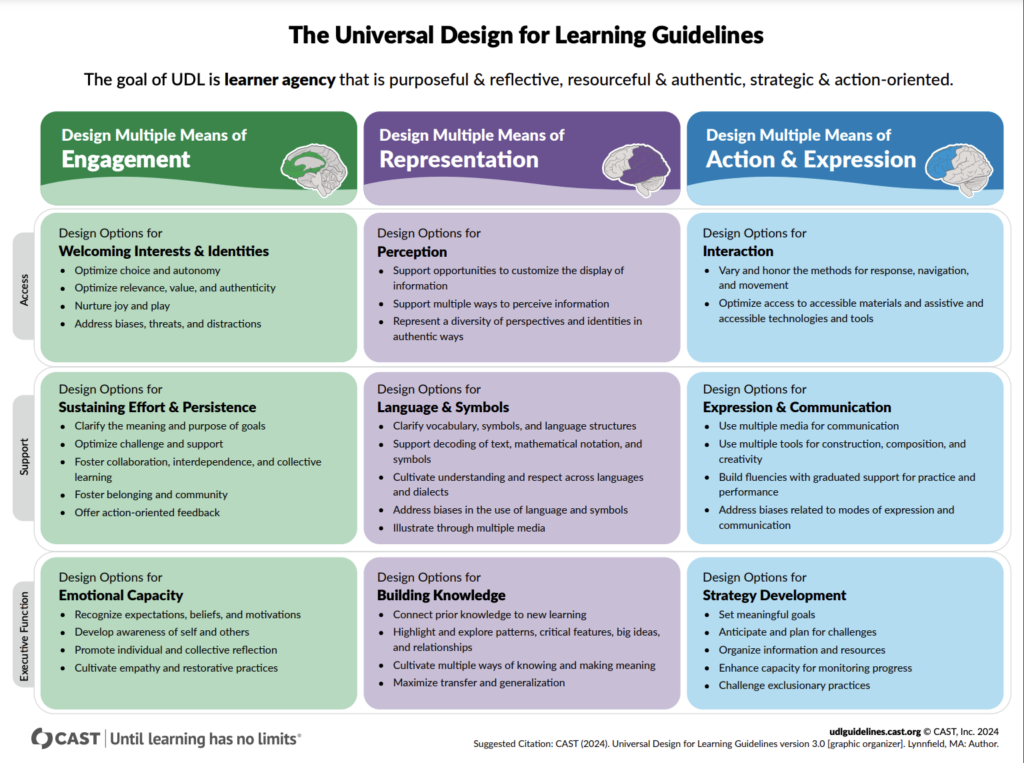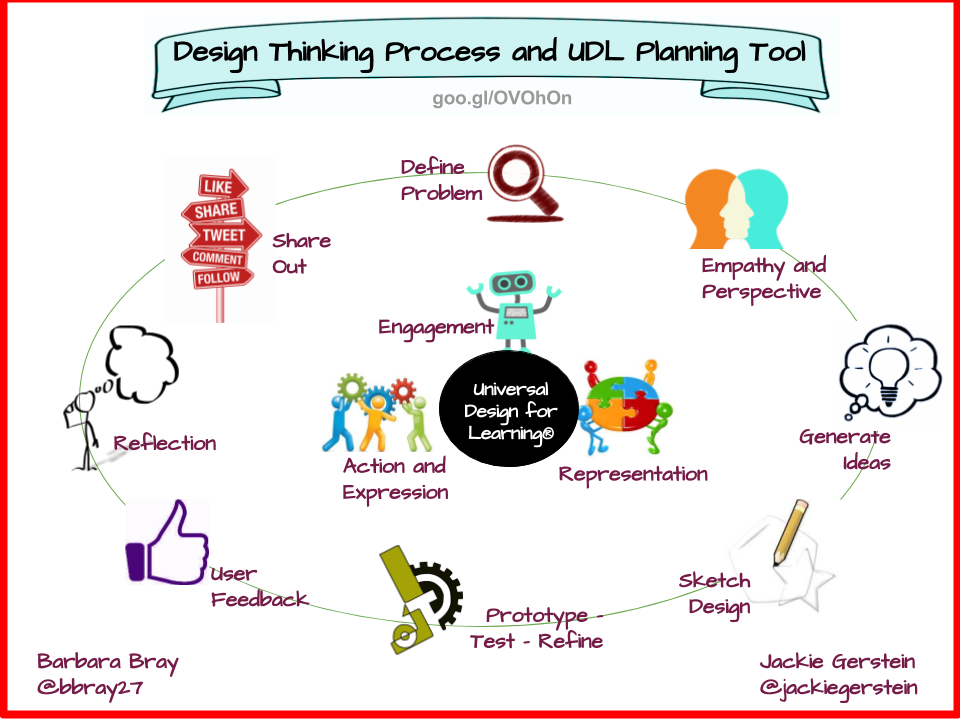Universal Design for Learning
The UDL framework guides the design of instructional goals, assessments, methods, and materials that can be customized to meet individual needs. UDL prompts educators to provide learners with multiple means of engagement, representation, action and expression. The CAST website if a great place to learn about the Universal Design for Learning Guidelines and to access inclusive resources.
The UDL Guidelines 3.0, released in July 2024, build upon previous versions by emphasizing the importance of addressing biases and exclusionary systems in learning environments. This update recognizes the diverse identities and experiences of learners and aims to create more inclusive and equitable learning opportunities for all.
Visit the “Changes from Guidelines 2.2 to Guidelines 3.0” page on the CAST website for a side-by-side comparison of what changed from Guidelines version 2.2 to Guidelines version 3.0 and visit the CAST downloads page to download a copy of the newest guidelines.
Inspiring Project
In 2017, educators from across Quebec went to the active learning classrooms at McGill University to talk about the connections between classroom space design and UDL. Here is a resource website that was developed following this meeting.
Universal Design for Learning and the Design Process
The Design Process and UDL go hand-in-hand to help teachers create student-centred lessons. Empathy is central to both approaches, and teachers are prompted to consider students’ rights, wants, and needs.
Comparing the below prompts may highlight how the Design Process and UDL complement each other.
UDL framework prompts:

Design Process prompts:

One resource that members of our team found helpful was the Design Thinking Process and UDL Planning Tool by Jackie Gerstein, Ed.D. and Barbara Bray. This article explores the connections between UDL and Design Thinkings and provides a useful teacher planning tool.











